Several months into the exciting world of riding motorcycles, I’ve learned a thing or two along the way – and I’m proud to say that I’ve never dropped a bike since I started riding.
On that note, I could confidently say that I am now a learned motorcycle rider, covering the basics to become a safe and responsible two-wheeled enthusiast. After all, most of the important riding skills are best taught through experience.
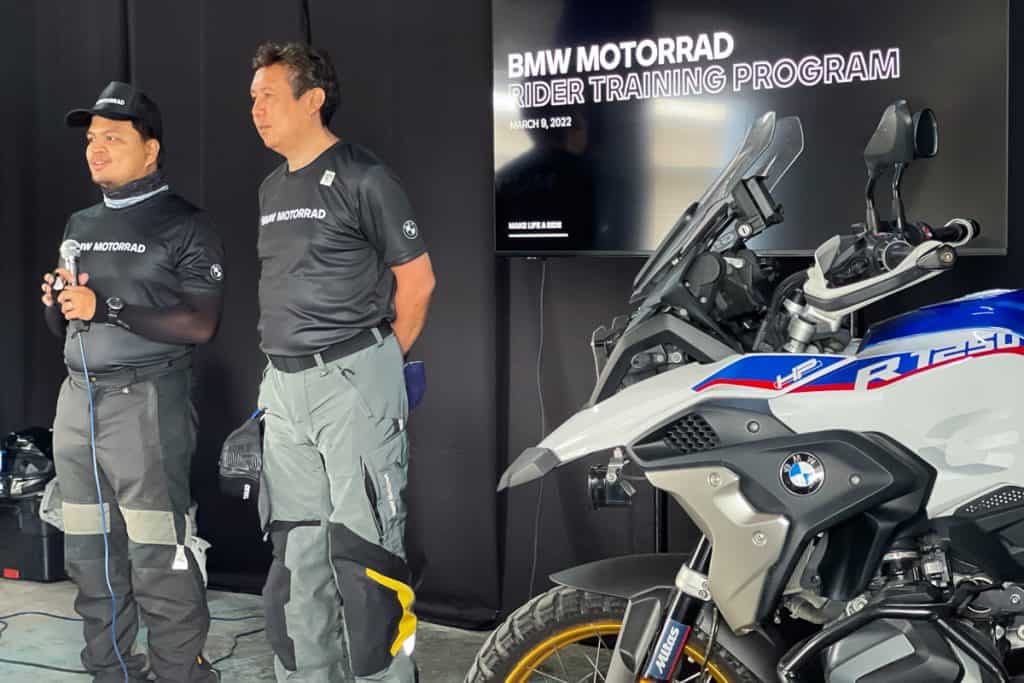
Then again, just when I thought I knew it all, BMW Motorrad invited me, along with a handful of media personnel and moto vloggers to try its new Rider Training Program, held in the confined of Carmona Race Track in Cavite. Other participants

It was a humbling experience that every rider should try – even those seasoned one who, just like myself, thought they knew everything they need to know about riding.
Taking you down a peg
If you’re not racing, riding fast is relatively easy. You just need to read the traffic ahead and know when and when not to accelerate. It’s a riding skill most, if not all, riders should know by now.
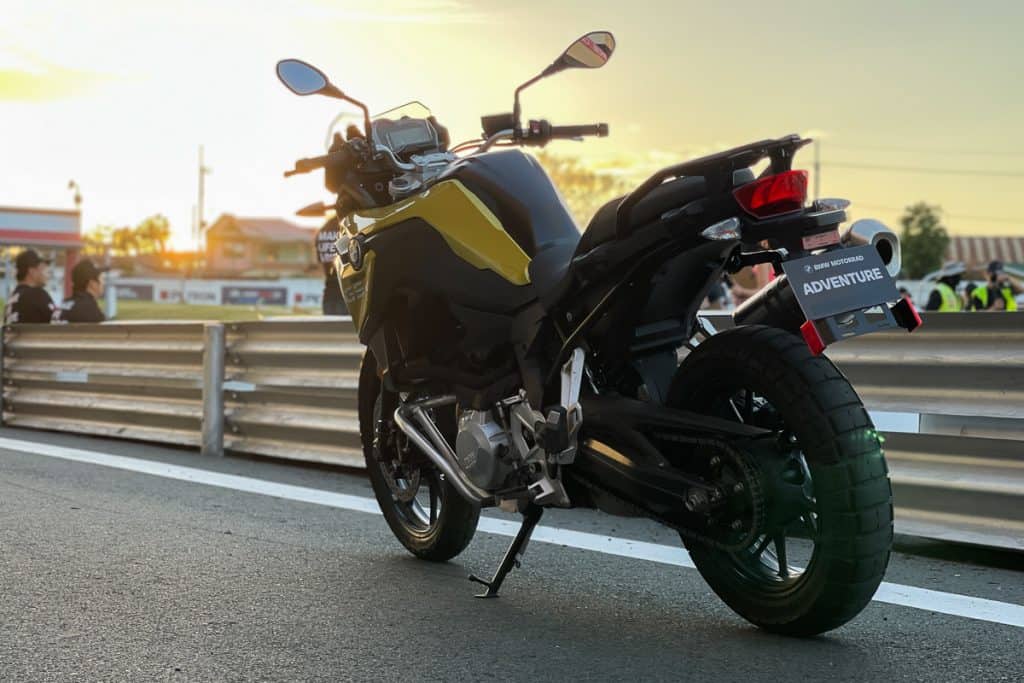
But the challenge lies when you need to maneuver slowly. With the heft and bulk of bikes, slowing down means more chance to lose your balance.
During the training program, BMW Motorrad certified coaches Toto Villanueva and Jacob Orbe demonstrated how you can balance your bike at slower paces. This involves counterweighting and proper positioning on the saddle; things I didn’t know before. In conjunction with learning how to set up your bike properly to your preference, it was only the tip of the iceberg.
Finding your bike’s center of gravity
The first exercise didn’t involve us riding on the saddle just yet. With the bike’s side stand folded, the coaches wanted us to balance the heavy BMW F750 GS and BMW F850 GS using just the tip of our fingers. They said it’s essential for us to find the bike’s center of gravity first to get more acquainted with the machine before the drills.
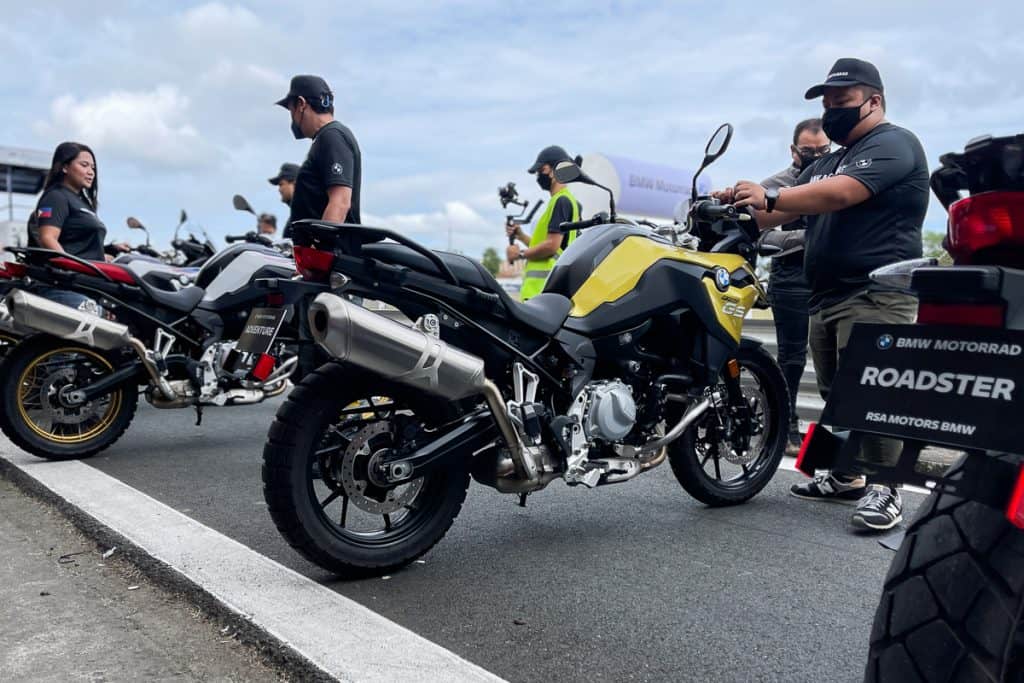
It was easy to dismiss this exercise as menial, which led to some participants playing around with the bike while doing so. Unsurprisingly, one of them miscalculated and dropped the F850 GS on its side.
It was also here where the coaches first demonstrated how to lift a bike properly. The key here was to use the strength of your legs and buttocks instead of your arms.
Walking the plank
The next one was called the corridor or walking the plank. In this test, we had to traverse a long piece of wood (a plank) with the assigned bikes as slowly as possible.
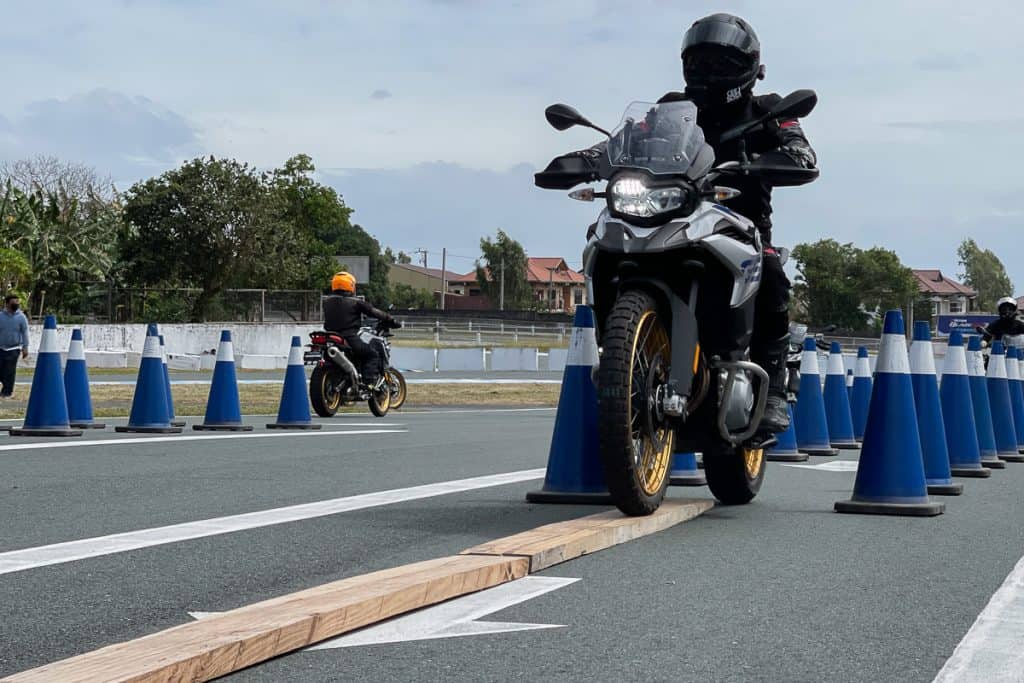
While in theory this may sound like an easy trick, doing so without looking at the wheels was way harder. The coaches said that it was better that way to keep your balance. True enough, I was able to complete the drill after a few tries.
U-Turns & Figure-8s
This exercise was the trickiest that day, as it involved making a U-Turn slowly, left and right. Plenty of the participants dropped their test bikes during the drills; good thing we were equipped with proper riding safety gear (helmets, padded jackets, boots, and gloves), and the bikes have crash bars to protect the essential parts.
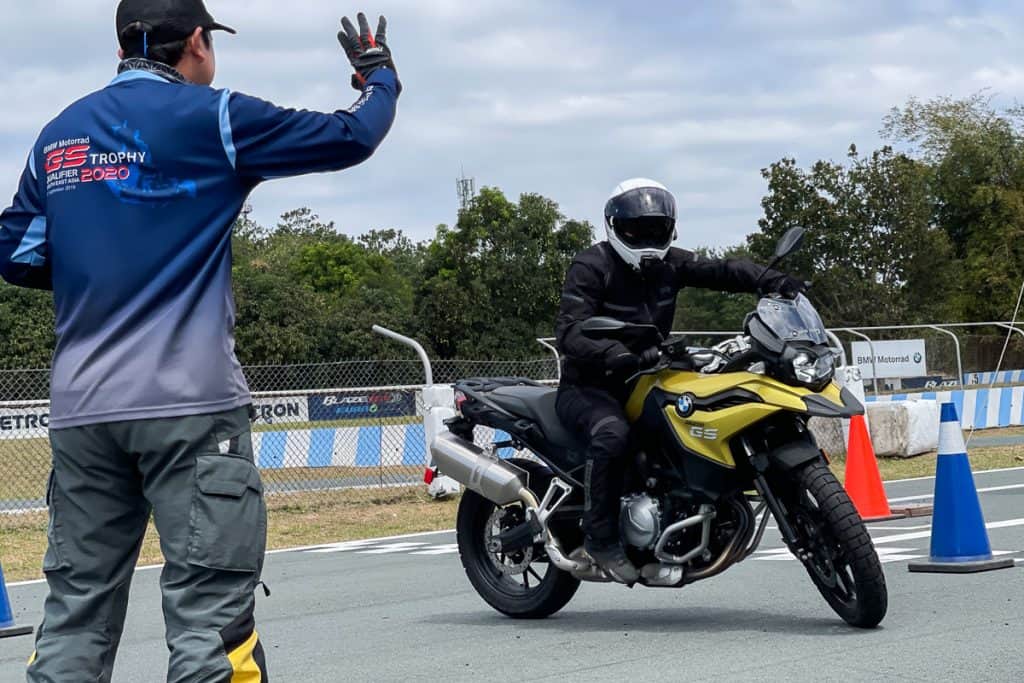
The trick was to use proper riding position and counterweight, and to just focus on the point of direction rather than looking down on the wheels or the handlebars.
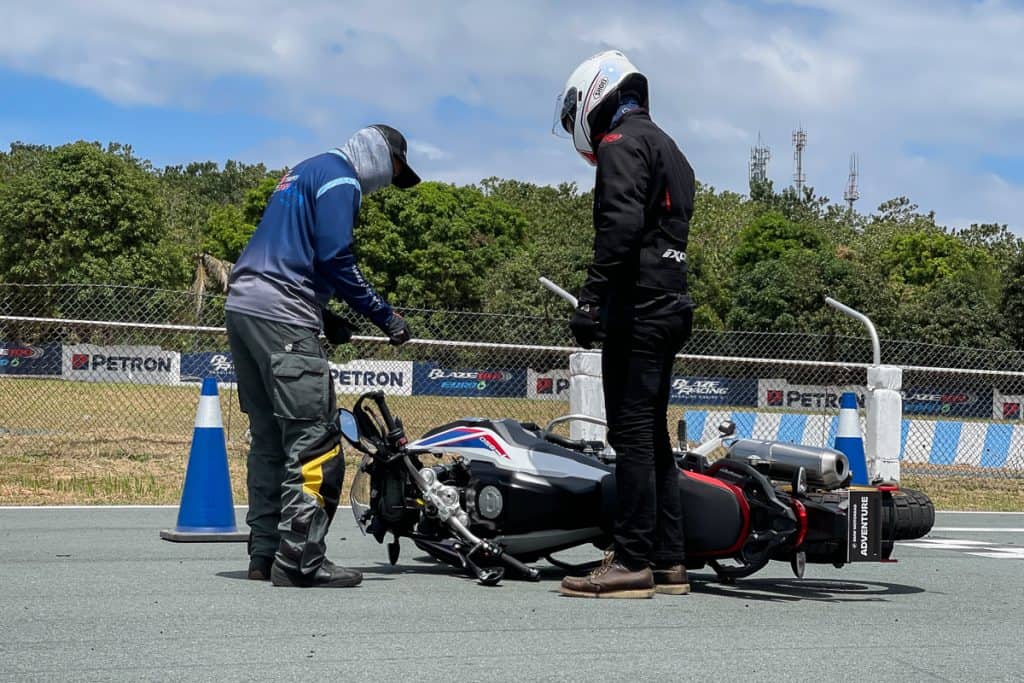
It took a few tries before we were able to master doing so, then we moved on to the next one which was doing Figure-8s (combination of both left and right U-Turns).
After both exercises, it felt like I was more connected to the bike, more so, with my actual non-BMW motorcycle that’s much smaller than the ones I’ve practiced on.
Slaloms
The slalom exercise was when I almost gave up. After seeing the coaches conquer the pre-set slalom course at speeds, I was sure that this exercise wasn’t for me – until they told us that we can tackle the course at our own pace. Whew.
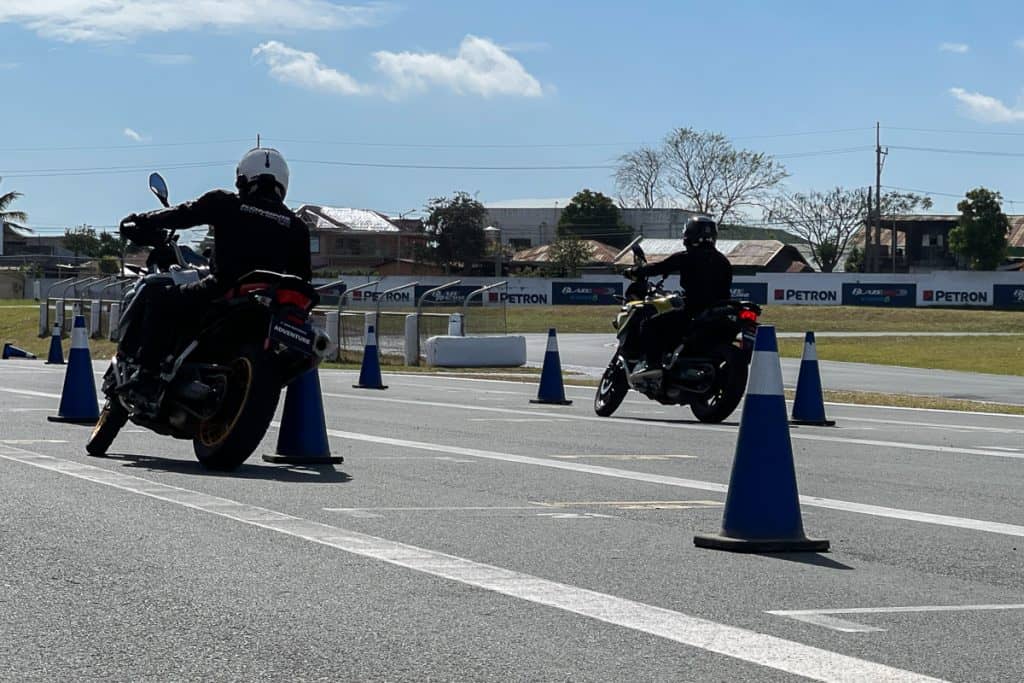
Using the counter-weighting and pedal stirring that we learned before the practical sessions, I was able to complete the slalom course. Slowly at first then finishing off at a pace that’s comparable with the group.
Emergency Avoidance & Braking
With a bit of speed coming from the slalom course, the next step is probably the most important of all skills – emergency avoidance and braking.
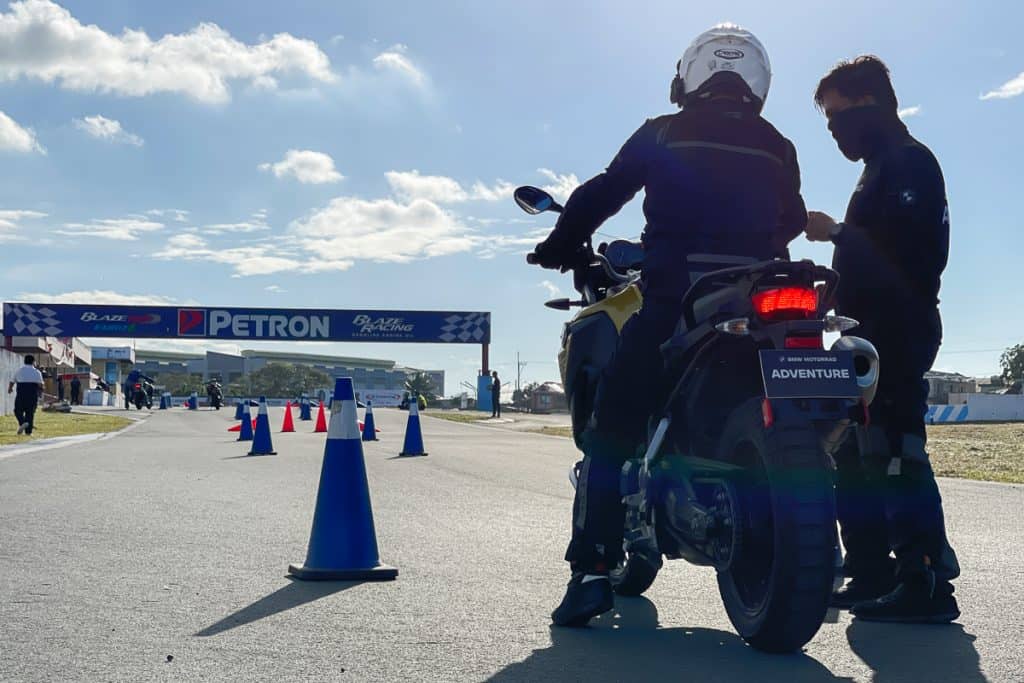
The coaches wanted us to accelerate up to around 80 km/h, then avoid an obstacle and get back on the same line using the skill we learned in slalom training. It was disconcerting at first, but seeing how the other participants were able to complete their turns, I soldiered on to mine – and was successful doing so.
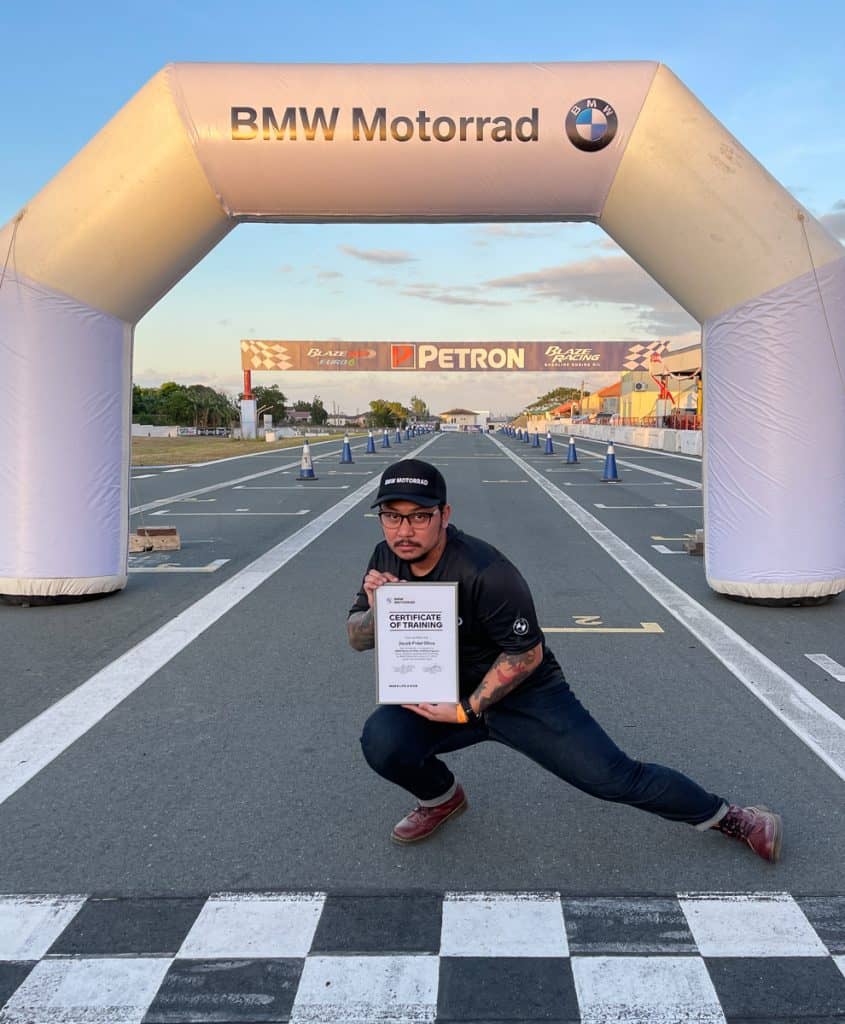
In the emergency braking exercise, they wanted us to go full throttle towards coach Toto and brake hard on his signal. It was relatively easy, considering that the bikes we used were equipped with ABS and disc brakes on both wheels. Make no mistake, though; one of the participants that day still dropped his bike, probably out of nervousness.
Open to the public – even for non-BMW owners
Suffice to say, the BMW Motorrad Rider Training Program has equipped me with the most important riding skills. It was enlightening, but I’m still proud to say that I still haven’t dropped a bike even after that whole day of challenges.
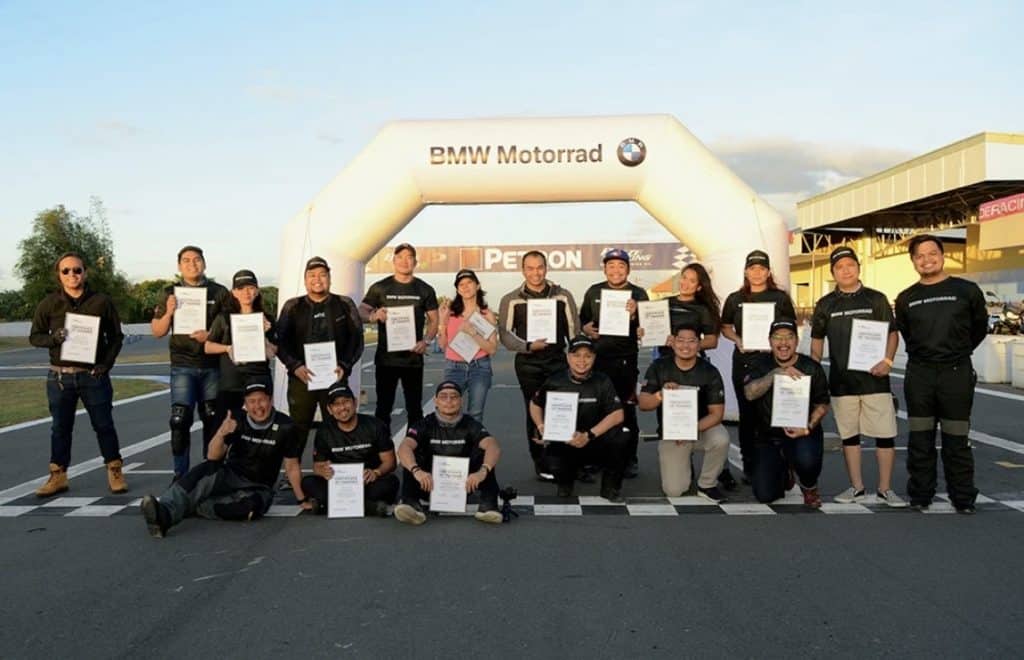
If you’re interested to join the training, BMW Motorrad has opened the Rider Training Program to the public, for both BMW and non-BMW motorcycle owners. All you need to do is to register via a link (https://forms.gle/VAzZLYQkM64pbfeR9) and pay the registration fee of P17,500. Apart from the precious riding skills you’ll learn, that amount of money entitles you to use a BMW motorcycle and the track, food and beverages (breakfast, lunch, and snacks), BMW Motorrad jersey, BMW Motorrad cap, and antigen testing for COVID-19.
Only up to 20 slots per training session at the Carmona Race Track are open, with the schedules to be given by BMW Motorrad itself. The first public training session is happening on May 31, 2022.

